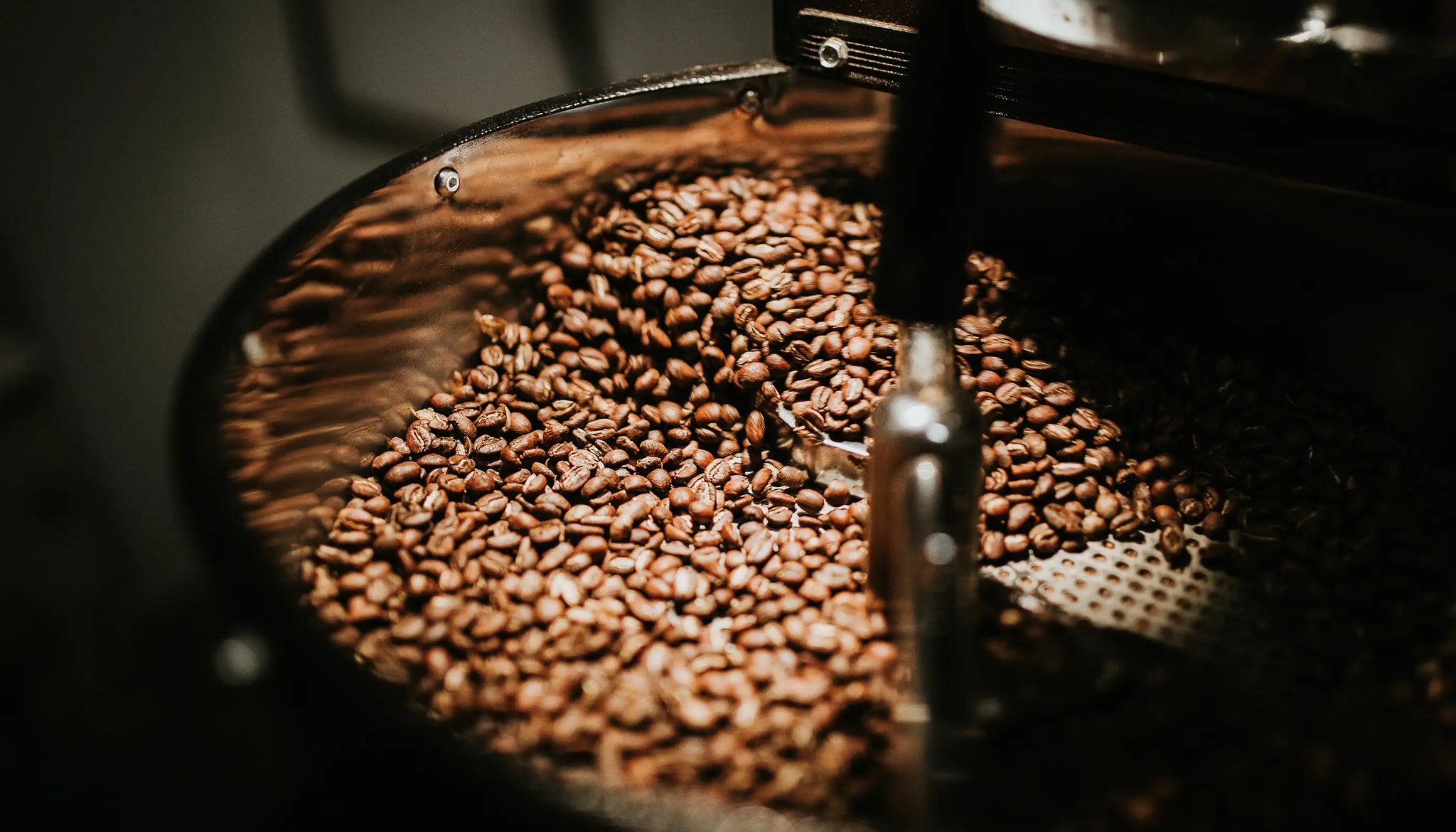A First-Time User’s Guide to Understanding SOE Single Origin Espresso
A First-Time User’s Guide to Understanding SOE Single Origin Espresso
Blog Article
Exploring the Abundant Tastes of Coffee Beans: a Deep Dive Into Espresso and Blended Coffee Beans
When you explore the abundant flavors of coffee beans, you uncover a complicated world where each variety brings its very own character to your cup. Recognizing the beginnings, processing approaches, and roasting strategies can change your coffee experience. As you browse via the art of espresso and the imagination behind combined coffees, you'll start to value the nuances that make each sip unique. What you'll find next could change the means you appreciate your early morning brew.
The Origins of Coffee Beans: Discovering Terroir and Flavor Profiles
When you take a sip of coffee, you're not simply appreciating a drink; you're experiencing an abundant tapestry of flavors shaped by the beans' beginnings. Each region generates distinct taste profiles influenced by elevation, climate, and dirt. Beans from Ethiopia commonly burst with brilliant, fruity notes, while those from Colombia often tend to offer a balanced, nutty sweet taste.
As you discover different origins, you'll discover exactly how terroir-- the ecological elements impacting a crop-- plays an important role - Single Origin Espresso. The same coffee variety can taste significantly various depending upon where it's expanded
When you consider these variables, you start to value the complexity behind your mug. Each sip narrates of the land and the farmers who nurtured the beans. Next time you indulge, think about the trip your coffee took before it reached your hands, and relish those intricate tastes that show its beginning.
Comprehending Espresso: The Art and Science Behind the Brew
When you believe concerning coffee, it's not almost the strong flavor; it's likewise about the strategies that bring it to life. Comprehending exactly how different prep work methods influence taste can change your brewing experience. Allow's explore the intricacies of espresso prep work and reveal the unique taste profiles that make each cup special.
Espresso Prep Work Strategies
Coffee preparation is both an art and a science, combining exact strategies with a deep understanding of coffee. To start, you'll intend to select premium, fresh baked beans and grind them carefully for excellent extraction (Single Origin Espresso). The grind dimension is vital; as well crude, and your espresso will be weak, as well great, and it'll be bitter
The outcome needs to be an abundant, creamy espresso with a gorgeous layer of crema on top. With practice, you'll understand these techniques.
Flavor Accounts Described
The globe of espresso uses an abundant tapestry of taste accounts that can boost your coffee experience. Light roasts frequently display intense acidity and vivid flavors, while dark roasts existing much deeper, bolder tones.
Comprehending these accounts assists you select the right coffee for your taste. Explore various blends can expose unexpected combinations. A well-crafted mix may balance the bright notes of an Ethiopian bean with the rich, chocolatey undertones of a Brazilian bean. Embrace the journey of uncovering coffee's varied flavors, and you'll change your coffee routine into an amazing adventure.
Processing Approaches: How They Influence Taste and Aroma
While it may seem that the beginning of coffee beans is one of the most considerable consider determining their taste and scent, the handling methods utilized post-harvest play an equally vital role. You'll locate that these methods can dramatically modify the last preference account of your cup.
For instance, the washed procedure removes the fruit from the beans before fermentation, typically bring about a cleaner, brighter flavor. Meanwhile, the natural procedure leaves the fruit intact during drying out, leading to a sweeter, fruitier profile.
Various other techniques, like honey processing, strike an equilibrium, permitting some fruit mucilage to continue to be, giving a distinct intricacy.
Each processing strategy engages with the beans' fundamental characteristics, improving or silencing specific tastes and fragrances. When you drink that espresso or mixed coffee, keep in mind that the trip from cherry to mug is influenced not just by origin however likewise by just how those beans were refined.
Roasting Techniques: Unlocking the Full Possible of Coffee Beans
Roasting techniques are vital for exposing the full potential of coffee beans, as they transform raw, green beans right into the aromatic, delicious coffee you appreciate. The selection of toasting technique-- light, medium, or dark-- drastically influences flavor profiles.
You can explore roasting temperatures and times to locate your excellent mixture. A slower roast at lower temperatures permits complex flavors to create, while a quicker roast can escalate resentment. Take notice of the cracks throughout toasting; the very first fracture indicates a light roast, while the 2nd fracture signals a dark roast. By mastering these strategies, you'll expose a world of taste, raising your coffee experience to new elevations. Take pleasure in every sip, understanding the care that went right into your cup!
The Magic of Blended Coffee: Creating One-of-a-kind Flavor Experiences
Developing a special flavor experience with mixed coffee can transform your early morning routine into an expedition of preference. By integrating various beans from various areas, you can reveal a harmony of tastes that elevate your mug to new heights. Each mix offers a distinctive profile, stabilizing sweetness, body, and level of acidity to create something absolutely special.
When you select a mix, you're not simply choosing a coffee; you're picking a journey across varied landscapes and societies. Explore various mixes permits you to find your individual faves, whether you delight in fruity notes or abundant, chocolatey touches.

Sampling Notes: Identifying the Subtleties in Your Mug
As you sip your coffee, you might discover a spectrum of flavors dancing on your taste buds, each disclosing the intricacies of the beans. You may taste the bright acidity similar to citrus or the discover here deep, rich notes similar to dark delicious chocolate. The sweet taste might stimulate honey or sugar, stabilizing the general account perfectly.
Take notice of the body of the coffee-- does it really feel ventilated and light, or is it full and luscious? The coating, also, supplies ideas; a sticking around aftertaste might mean nuttiness or flower touches.

Do not fail to remember to explore the unique characteristics of various beginnings, as each region imparts distinctive flavors - Single Origin Espresso. Ethiopian coffees often existing fruity notes, while Colombian beans might display a much more rounded sweet taste. By acknowledging these nuances, you'll grow your recognition for each mug, raising your coffee experience to brand-new heights

Brewing Methods: Taking Full Advantage Of Taste Extraction for every single Bean
When you discover the various developing methods, you'll uncover that each method can significantly impact the taste profile of your coffee. From French press to pour-over, each approach essences various compounds, enhancing or muting specific notes. For circumstances, using a French press allows oils to remain in the brew, creating a richer taste, while pour-over highlights clarity and illumination.
Temperature level and grind size also play important duties. A coarser grind works best for chilly mixtures, while a fine work is perfect for coffee. link Explore water temperature level-- in between 195 ° F and 205 ° F-- can reveal concealed tastes, too.
Don't ignore steeping time; a quick removal can bring about sour notes, while over-extraction may produce anger. By adjusting these variables, you can make best use of flavor extraction and genuinely boost your coffee experience. Enjoy the journey of discovering what technique ideal matches your palate!
Frequently Asked Concerns
What Is the Suitable Water Temperature Level for Developing Coffee?
The excellent water temperature level for brewing coffee's in between 195 ° F and 205 ° F. If you make use of water that's too hot, you'll over-extract flavors; too cold, and you won't extract enough. Go for that pleasant spot for the best brew!
How Does Grind Size Affect Coffee Taste?
Work dimension substantially affects coffee taste. Finer grinds essence a lot more oils and tastes, leading to a bolder taste, while coarser grinds yield a lighter flavor. Readjusting work dimension aids you attain your preferred coffee profile.
Are There Health Advantages Related To Drinking Coffee?

What Is the Distinction In Between Arabica and Robusta Beans?
Arabica beans are smoother and sweeter, frequently featuring fruity tastes, while robusta beans are more powerful with a bitter taste and greater high levels of caffeine content. You'll notice these distinctions in scent and brewing experience.
Just How Can I Store Coffee Beans for Quality?
To keep coffee beans for quality, maintain them in an airtight container, away from heat, light, and dampness. You'll keep their flavor longer if you just grind what you need right prior to brewing.
Exploring the Rich Tastes of Coffee Beans: a Deep Dive Into Espresso and Blended Coffee Beans.
When you discover the rich tastes of coffee beans, you discover a complex globe where each range brings its own character to your cup.When you take a sip of coffee, you're not simply enjoying a beverage; you're experiencing a rich tapestry of tastes formed by the beans' origins.Roasting strategies are necessary for revealing the complete capacity of coffee beans, as they change raw, environment-friendly beans into the aromatic, savory coffee you delight in.As you drink your coffee, you might observe a range of flavors dancing on your taste buds, each disclosing the complexities of the beans.
Report this page